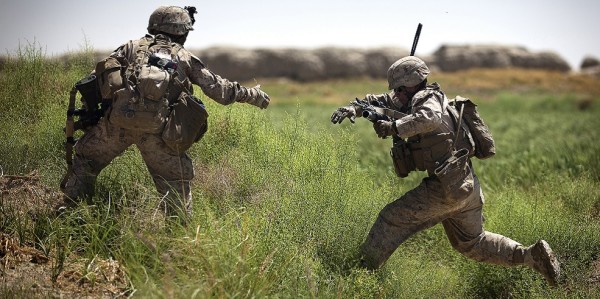

Leadership is the type of thing that’s easier to point out when it’s lacking than when it’s present, and nowhere is its absence more keenly felt than on the battlefield, where it’s needed most.
For Marine Maj. Gen. Ray “E-tool” Smith leadership under fire is something he knows and understands well.
The seventy-year-old Smith is a tested and proven combat leader and a highly decorated Marine veteran with more than 33 years of service under his belt. He is a recipient of the Navy Cross, two Silver Star Medals, a Bronze Star Medal with Valor, and three Purple Hearts for injuries sustained in combat.
Related: The true story of how ‘E-tool’ Smith earned his famous nickname »
Smith served in Vietnam, Grenada, and Beirut and has led men under fire and commanded troops at every level.
For Smith, combat leadership isn’t a mystery, and as a former instructor at The Basic School in Quantico, Virginia, he also knows how to instill in others the same principles that guided him.
Here are six things you need to do to be an effective combat leader.
First, you need to establish clear lines of trust and communication between you and your subordinates.
The rationale is actually quite simple: The moment the shooting starts and everything goes to shit, it becomes critically important that you understand your mission and its end-state.
“There’s an old adage, which is very true: that all plans fall apart on the first round fired and things start going to hell in a handbasket,” explains Smith. “If everybody understands what the real intent is, what the real purpose, the larger purpose of a particular action is, when shit goes to pot, people can be guided by what we’re really trying to accomplish instead of just doing exactly what they were told in the plan.”
According to Smith, this communication and understanding between leaders and their troops is critically important in counterinsurgency missions where undefined threats, fluctuating mission parameters, and unclear objectives and benchmarks for success are the orders of the day.
“I would say that the more nebulous the environment the more important that everybody down to the lowest ranking private understands the larger purpose of every action, so as to be guided when things go to hell,” explains Smith.
Essentially, you need to accept the fact that nothing will go according to plan.
If you’re wondering why, it should be clear: It’s because your enemy has a vested interest in ensuring everything goes sideways on you.
“One of the things that non-veterans don’t fully understand about combat is the obvious … you’re dealing with a thinking, acting, human on the other side,” says Smith. “Your actions will cause counteractions by them. They won’t always do what you expect them to do, and in a counterinsurgency environment, they will probably never do what you expect them to do.”
Next, you need to be educated on the subject of warfare and smart enough to apply it.
It’s not enough to know you need to take a specific objective, explains Smith, you need to understand, or at least anticipate, what will happen after you seize it.
“Behind every action is an intended consequence, a next step,” says Smith. “So when things go to pot, if you focus yourself on what the next step was intended to be then you make your actions consistent with that next step, since the plan for the first step has gone to shit.”
Fourth, you’ve got to have physical and mental courage.
“I read or heard somewhere way back that courage is the ability to continue to function normally or nearly normally, even though you’re terrified,” explains Smith. “You have to have enough personal courage, inner fortitude, so that you don’t ever panic even in a panicky situation, that you’re always in control of yourself.”
Smith explains that you can’t hope to lead others if you can’t even control yourself.
“You can’t quit thinking just because things are bad,” says Smith.
Never ask your men to do something you wouldn’t do yourself.
As leaders progress in rank and move further from the front, there’s a risk of a disconnect between leaders and their subordinates.
“It shouldn’t change, but unfortunately I think it does,” explains Smith. “The further you get from the actual grit and reality of the immediate fight — the last 100 yards — the more likely you are to dismiss the difficulties involved in that last 100 yards.”
To keep this from happening, Smith explains that he ran an internal test every time he gave an order. He would run the order over in his mind and and imagine being the last guy in the chain of command to receive it, whether it was the fire-team leader or the point man, and he’d think about what he would say if he was in that Marine’s shoes.
If his response was “You gotta be shitting me,” Smith says he would rethink the order.
However, there are some times when there’s no way around a tough choice.
Real leaders lead from the front and part of the reason for that is they’re willing to shoulder the same burdens they ask their men to bear.
“And I had a time or two where I had to tell guys to do things, but I’d tell them, ‘Look, this is bad shit, I wish we didn’t have to do this, but we have to, so we’re going,’ and in that case you go with them and you live with the results,” says Smith. “I’m a strong believer in leadership from the front.”
WATCH NOW:
